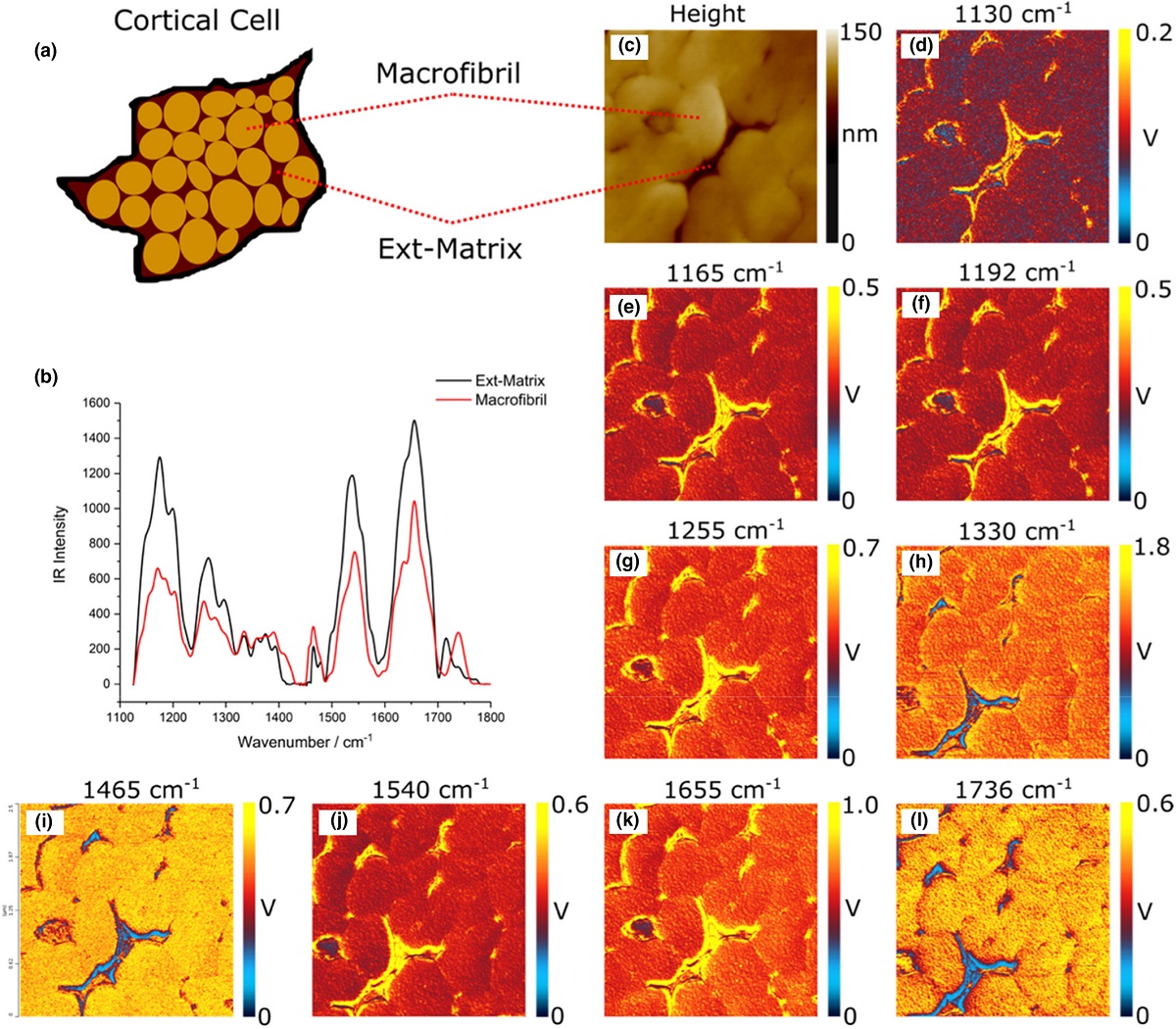The structure of hair fibres has been the focus of much research over the last century with several techniques used to investigate their structure. *
The main constituent of hair fibres of relevance to their mass, volume and associated mechanical properties is the cortex. *
As the major constituent, and responsible for a significant proportion of the structural and mechanical properties of hair, quantitative characterization of the chemical and physical sub-structure of the cortex is important. *
In the article “Chemically characterizing the cortical cell nano-structure of human hair using atomic force microscopy integrated with infrared spectroscopy (AFM-IR)” A. P. Fellows, M. T. L. Casford and P. B. Davies describe how they used the hybrid technique of AFM-IR, combining atomic force microscopy with an IR laser, which circumvents the diffraction limit of light and achieves nanoscale chemical resolution down to the AFM tip radius. *
Their study extends the work of previous publications, focussing on chemical characterization of the internal sub-structures of hair cortical cells in order to gain insight into the differential constitution of the individual components. *
The atomic force microscopy integrated with infrared spectroscopy (AFM-IR) was employed on ultra-thin microtomed cross-sections of human hair fibres to spectrally distinguish and characterize the specific protein structures and environments within the nanoscale components of cortical cells. *
The resulting spectral analysis showed clear distinctions in the Amide bands in the macrofibrils and surrounding intermacrofibrillar matrix, yielding novel insight into the molecular structure and intermolecular stabilization interactions of the constituent proteins within each cortical component.*
NANOSENSORS™ gold coated AdvancedTEC ATEC-ContAu tip view AFM probes (typical force constant: 0.2 N/m, typical resonance frequency: 15 kHz) were used. *

Figure 2 from A. P. Fellows et al “Chemically characterizing the cortical cell nano-structure of human hair using atomic force microscopy integrated with infrared spectroscopy (AFM-IR)”:
AFM-IR data obtained from a human hair cross-section (approx. 300 nm thick) showing (a) a schematic structural representation of the cortical cell (b) average spectra corresponding to each observed region (macrofibril and Ext-matrix) (c) AFM height map and (d)-(l) IR-intensity maps recorded in contact mode across a 2.5 × 2.5 μm region of the surface at a number of different infrared frequencies corresponding to contributions observed in the spectra (each shown above the corresponding image) for a representative fibre section
*Alexander P. Fellows, Mike T. L. Casford and Paul B. Davies
Chemically characterizing the cortical cell nano-structure of human hair using atomic force microscopy integrated with infrared spectroscopy (AFM-IR)
International Journal of Cosmetic Science, Volume 44, Issue 1, February 2022, Pages 42-55
DOI: https://doi.org/10.1111/ics.12753
Open Access: The article “Chemically characterizing the cortical cell nano-structure of human hair using atomic force microscopy integrated with infrared spectroscopy (AFM-IR)” by A. P. Fellows, M. T. L. Casford and P. B. Davies is licensed under a Creative Commons Attribution 4.0 International License, which permits use, sharing, adaptation, distribution and reproduction in any medium or format, as long as you give appropriate credit to the original author(s) and the source, provide a link to the Creative Commons license, and indicate if changes were made. The images or other third party material in this article are included in the article’s Creative Commons licence, unless indicated otherwise in a credit line to the material. If material is not included in the article’s Creative Commons licence and your intended use is not permitted by statutory regulation or exceeds the permitted use, you will need to obtain permission directly from the copyright holder. To view a copy of this licence, visit https://creativecommons.org/licenses/by/4.0/.